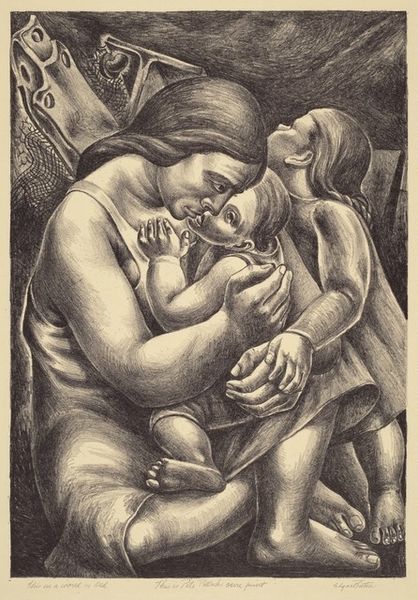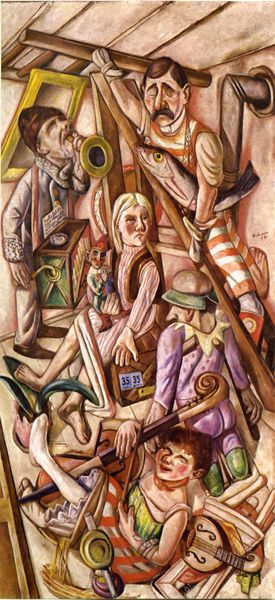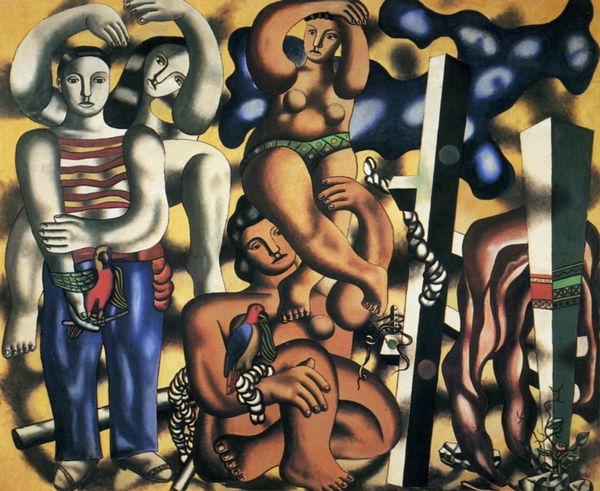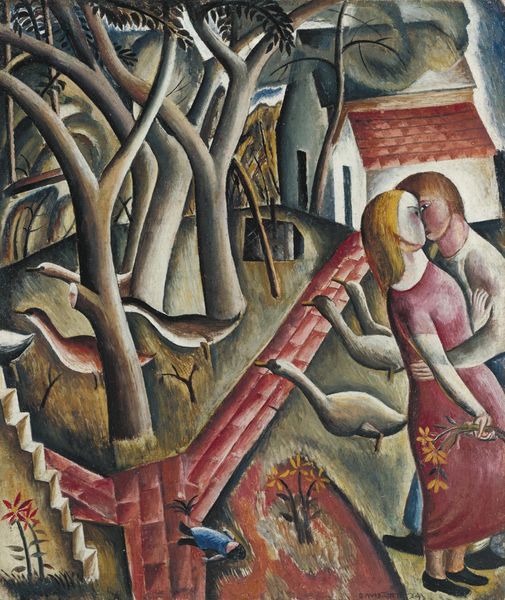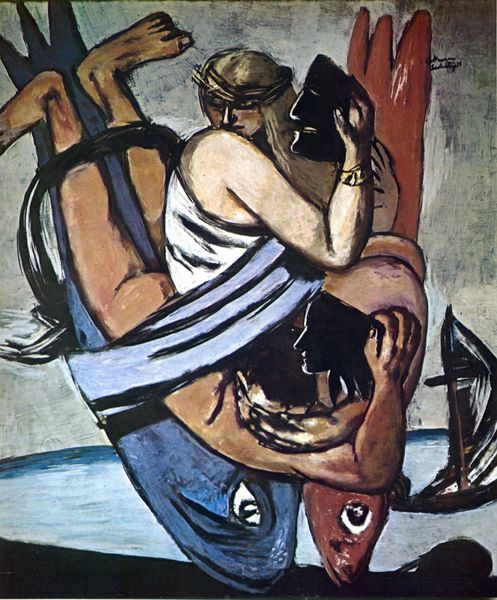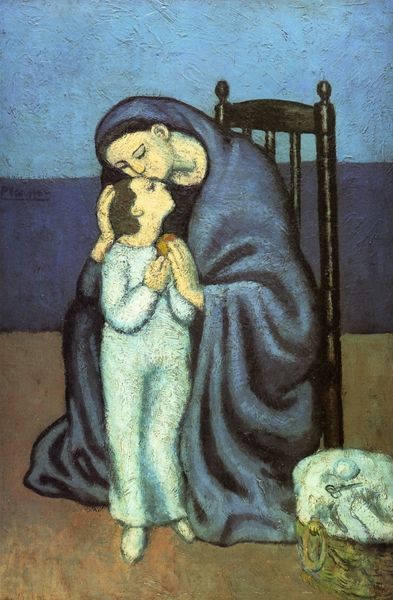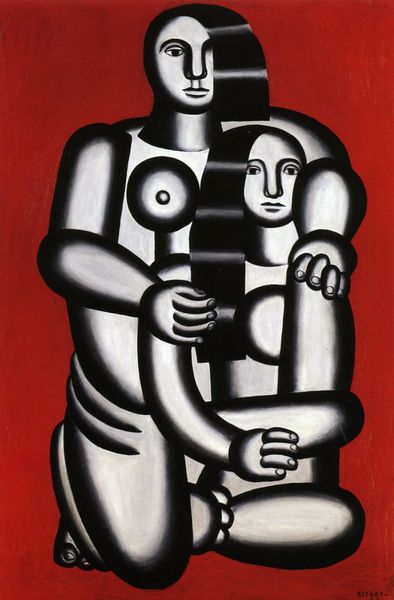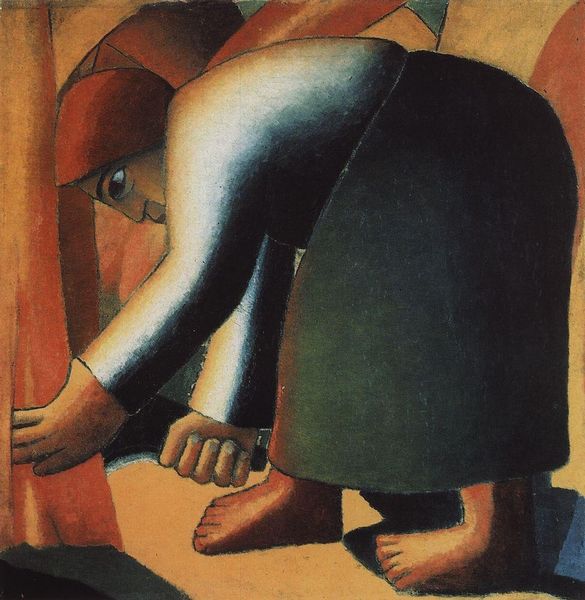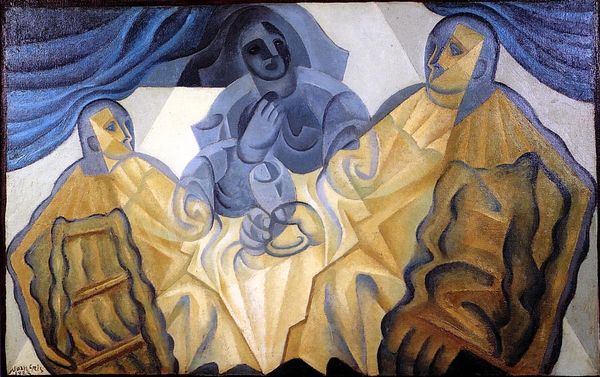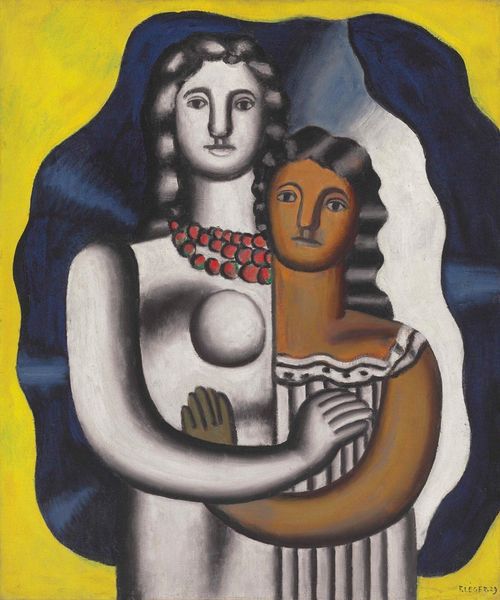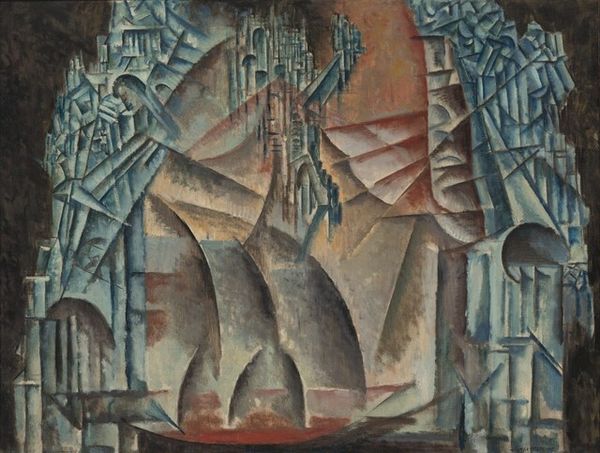
painting, oil-paint, mural
#
portrait
#
painting
#
oil-paint
#
figuration
#
social-realism
#
oil painting
#
history-painting
#
mural
#
modernism
#
realism
Copyright: Carlos Quizpez Asín,Fair Use
Curator: Editor: This painting, titled "Guerra," meaning "War," was created by Carlos Quizpez Asín in 1940 using oil paint. It’s a pretty striking image, isn't it? The faces have such an intense and haunting quality to them. What's your initial impression of the painting, particularly in the context of its time? Editor: It's incredibly evocative. The starkness, especially the contrast between the figures and the militaristic background, creates this overwhelming sense of dread. How do you interpret the artist's message here? Curator: Considering Asín’s Social Realist approach and the global climate of 1940, I see it as a powerful indictment of war's impact on individuals and relationships. Notice the woman’s desperate grasp and the man’s averted gaze. Could that symbolize the trauma and disruption war inflicts on intimacy and societal bonds? Also, what's your take on the symbolism of the figure in the gas mask in the lower-right corner? Editor: The gas mask is a potent image of dehumanization, stripping away individuality in the face of war. It suggests the loss of personal identity and the ever-present threat of annihilation, right? But, do you see a specifically Latin American perspective represented here? Curator: Absolutely. Even though it reflects the universal experience of war, painted during World War II, the figures lack markers of European identity; the features feel rooted in the Americas. Asín seems to be exploring Latin America's complicated relationship to global conflict, questioning neutrality amidst worldwide suffering. Does that reading resonate with you? Editor: It does, actually. It highlights a perspective that often gets overshadowed in dominant Western narratives of WWII. I hadn't considered the nuanced political positioning Asín might have been portraying. Curator: Exactly. By acknowledging these interwoven layers of history, politics, and personal experience, we understand how artwork becomes a critical site of cultural memory. Editor: That’s fascinating. I now appreciate how "Guerra" transcends its immediate subject matter, offering a poignant commentary on human cost and cultural identity in times of conflict. Curator: And by interrogating these representations, we contribute to more nuanced and inclusive understanding.
Comments
No comments
Be the first to comment and join the conversation on the ultimate creative platform.
